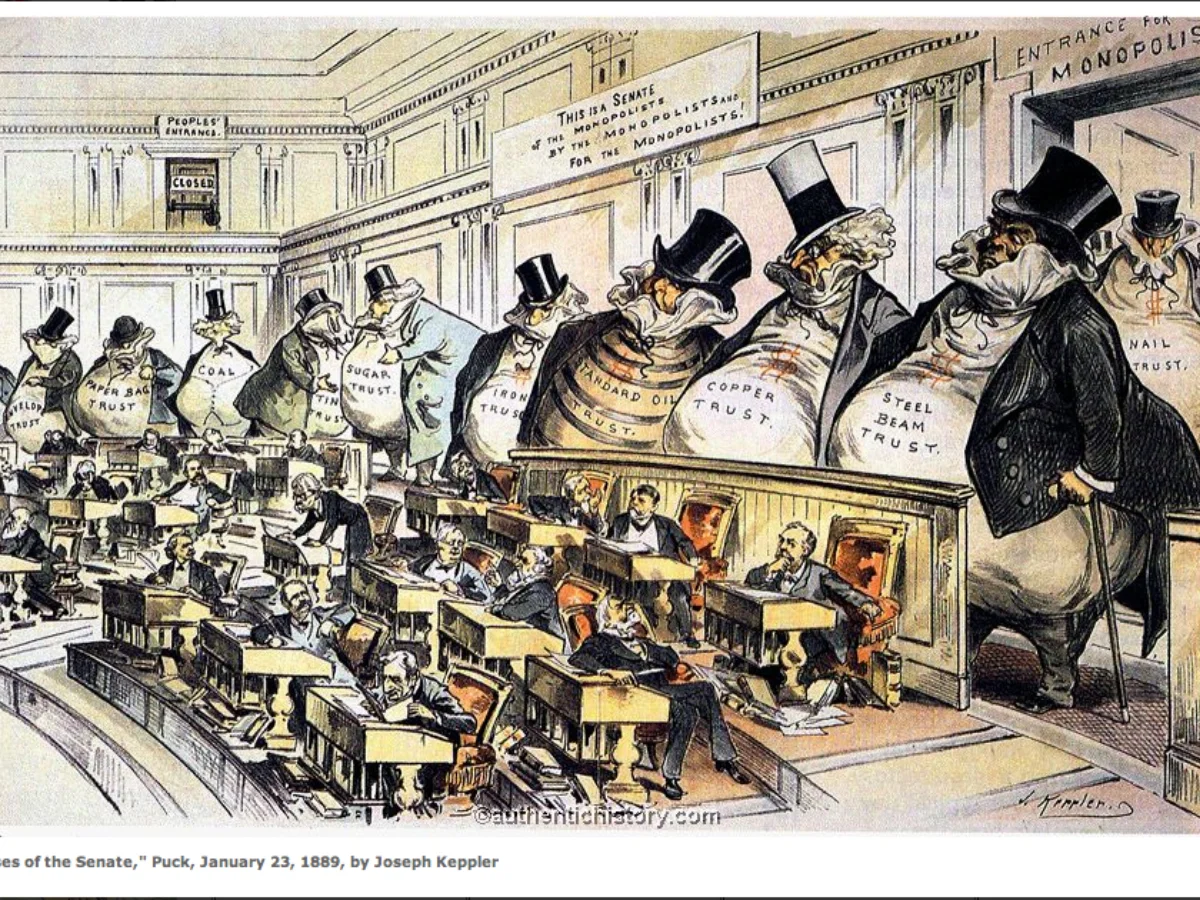Progressivism in the United States was a reform movement that emerged in the late 19th and early 20th centuries. At its core, progressivism aimed to address various social and political issues, and one of its primary goals was to eliminate government corruption. In this article, we’ll delve into the motivations behind why progressives sought to eradicate corruption within the government and the methods they employed to achieve this ambitious goal.
1. Introduction
Government corruption has been a persistent issue throughout history, and the United States was no exception. During the late 19th and early 20th centuries, a reform movement known as progressivism gained momentum. Progressives were dedicated to addressing various societal problems, and one of their key objectives was to root out corruption within government institutions.
2. Understanding the Progressive Era
2.1. What Was the Progressive Era?
The Progressive Era, spanning roughly from the 1890s to the 1920s, was characterized by a fervent desire for social and political change. Progressives sought to improve the lives of ordinary Americans by advocating for reforms in various areas, including labor conditions, women’s suffrage, and government accountability.
2.2. Key Issues Faced During the Progressive Era
The era was marked by significant challenges, including the rapid industrialization of the United States, urbanization, and the concentration of wealth in the hands of a few. These issues contributed to growing inequality and social unrest.
3. The Fight Against Government Corruption
3.1. Why Government Corruption Was a Concern
Government corruption was a pressing concern during the Progressive Era for several reasons:
- Trust in Government: Widespread corruption eroded public trust in government institutions.
- Inefficient Governance: Corruption often leads to inefficiency, with officials prioritizing personal gain over public welfare.
- Social Injustice: Corrupt practices exacerbated social inequality and hindered efforts to address pressing issues like child labor and workers’ rights.
3.2. Influential Figures in the Anti-Corruption Movement
Numerous influential figures emerged as champions of the anti-corruption movement. People like muckraker journalists Ida Tarbell and Lincoln Steffens played a crucial role in exposing corrupt practices.
3.3. Methods Used to Combat Corruption
Progressives employed various methods to combat corruption, including:
- Investigative Journalism: Muckraker journalists exposed corrupt practices through investigative reporting.
- Legislative Reforms: Progressives pushed for legislative reforms at the state and federal levels to increase government transparency and accountability.
- Political Activism: Grassroots political movements and organizations pressured lawmakers to address corruption issues.
4. Achievements of the Progressive Era
4.1. Legislative Reforms
The Progressive Era saw the enactment of significant legislative reforms, including:
- The Pendleton Civil Service Reform Act: This act established the merit system for federal employment, reducing the influence of political patronage.
- The 17th Amendment: It allowed for the direct election of U.S. Senators, reducing the power of state legislatures and political machines.
- Anti-Trust Legislation: Laws like the Sherman Antitrust Act aimed to curb the power of monopolies.
4.2. Legacy of the Progressive Era
The Progressive Era left a lasting legacy, with many of its reforms still in place today. It set a precedent for government accountability and transparency and inspired future generations to fight against corruption and inequality.
5. Conclusion
Progressives of the early 20th century sought to eliminate government corruption as part of their broader mission to create a more just and equitable society. Through investigative journalism, legislative reforms, and grassroots activism, they made significant strides toward achieving this goal, leaving behind a legacy of transparency and accountability that continues to shape American politics today.
6. FAQs
6.1. Who were some prominent progressive reformers known for fighting corruption?
Prominent progressive reformers known for their anti-corruption efforts include Ida Tarbell, Lincoln Steffens, and Upton Sinclair.
6.2. Did progressivism succeed in eliminating all forms of government corruption?
While progressivism made substantial progress in reducing government corruption, it did not eliminate it entirely. Corruption remains a challenge in modern politics.
6.3. How did the media contribute to the exposure of government corruption during the Progressive Era?
Muckraker journalists played a crucial role by uncovering and exposing corrupt practices through investigative reporting, bringing them to the public’s attention.
6.4. Are there any parallels between the progressive era’s fight against corruption and modern-day anti-corruption efforts?
Yes, modern anti-corruption efforts often draw inspiration from the methods and successes of the progressive era, emphasizing transparency, accountability, and legal reforms.
6.5. What can we learn from the progressive era’s approach to combating government corruption?
We can learn that a combination of investigative journalism, grassroots activism, and legislative reforms can be effective in addressing government corruption and promoting accountability.
Read More: https://www.rozyjos.com/
More Related:
Blended Bifocal vs. Progressive Lenses: Which Is Right for You?
Does Progressive Have a Grace Period?
FLCL Progressive vs Alternative: A Battle of Sequels
SAO Progressive vs Original: Exploring the Evolution of Sword Art Online
Why Are Progressive Lenses So Expensive: Unveiling the Costs Behind Clarity
How Many Hard Brakes Does Progressive Allow: Navigating Safe Driving
Single Vision or Progressive for Driving: Which is Right for You?

